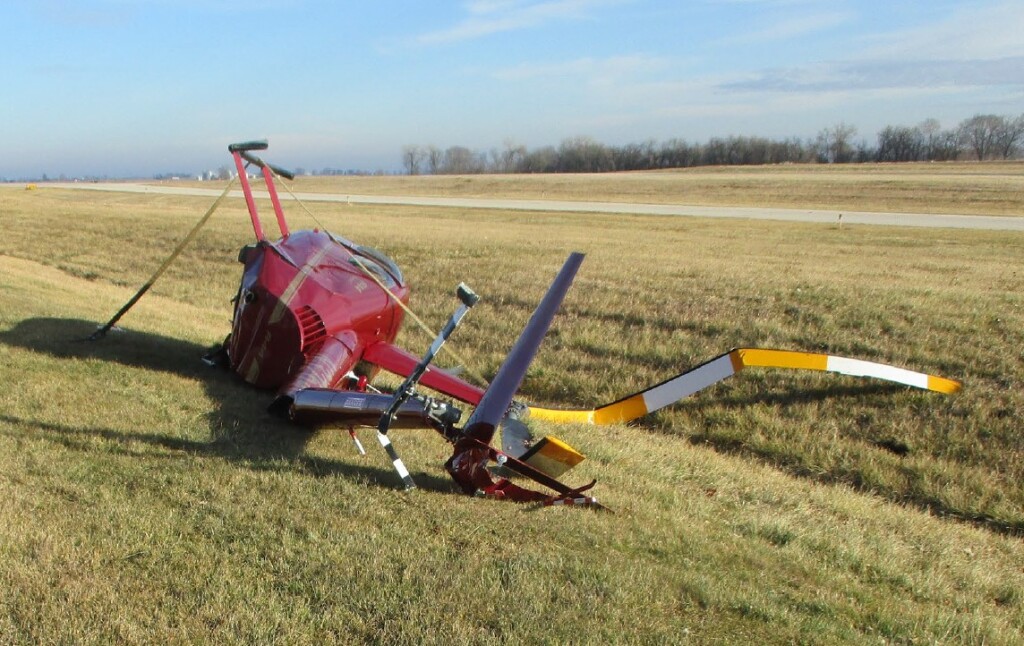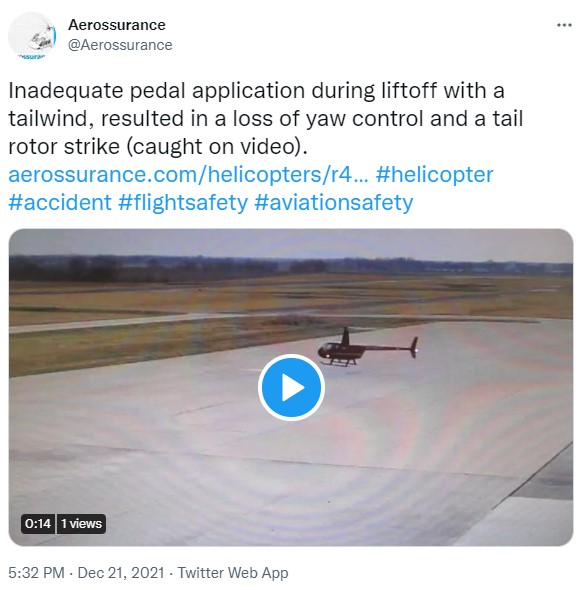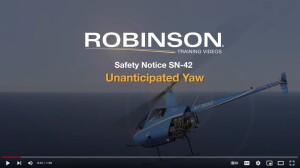R44 “Unanticipated Yaw” Accident During Tailwind Take Off Caught on Video Say NTSB(N3264U)
On 20 December 2020 Robinson R44 N3264U crashed at Morris Municipal Airport/Washburn Field, Illinois The pilot received minor injuries.
In their safety investigation report the US National Transportation Safety Board (NTSB) explain that the pilot has 1650 hours of flying experience, 280 on type.
There were three weather observations recorded from around the accident time and the wind was from 240° to 250° at 6 to 7 knots, with no reported gusts.
The pilot was practicing “pickups and set downs in the same spot on the ramp and the wind was from the west as he completed these maneuvers. During the final maneuver, the wind shifted, and he lost control of the helicopter”.
An airport surveillance video showed that during accident sequence, the helicopter was facing east when it briefly touched down and wobbled, then lifted up as the tail boom swung around in a clockwise direction. The tail rotor impacted the ramp then climbed and continued to rotate.
The helicopter completed about 1.5 rotations as it descended and impacted the ground and rolled onto its right side.
The tail rotor struck the ground early in the sequence.
NTSB note that Robinson issued a safety notice on unanticipated yaw in May 2013:
A pilot’s failure to apply proper pedal inputs in response to strong or gusty winds during hover or low-speed flight may result in an unanticipated yaw…
To avoid unanticipated yaw, pilots should be aware of conditions (a left crosswind, for example) that may require large or rapid pedal inputs. Practising slow, steady state hovering pedal turn will help maintain proficiency ibn controlling yaw. Hover training with a qualified instructor in varying wind conditions may also be helpful.
NTSB Probable Cause
The pilot’s inadequate pedal application during liftoff with a tailwind, which resulted in a loss of yaw control and a subsequent impact with terrain.
Or was this simply mishandling? Watch the video and make your own decision!
Safety Resources
The European Safety Promotion Network Rotorcraft (ESPN-R) has a helicopter safety discussion group on LinkedIn. You may also find these Aerossurance articles of interest:
- Unanticipated Yaw: Loss of Control During Landing Site Survey
- Grand Canyon Air Tour Tragic Tailwind Landing Accident
- Inexperienced IIMC over Chesapeake Bay: Reduced Visual References Require Vigilance
- US Air Ambulance Near Miss with Zip Wire and High ROD Impact at High Density Altitude
- Fatal Wisconsin Wire Strike When Robinson R44 Repositions to Refuel
- Impromptu Landing – Unseen Cable
- A Try and See Catastrophe: R44 Accident in Norway in Bad Weather
- Fatal B206L3 Cell Phone Discount Distracted CFIT
- Tragic Texan B206B3 CFIT in Dark Night VMC
- Fatal Wisconsin Wire Strike When Robinson R44 Repositions to Refuel
- Fatal R44 Loss of Control Accident: Overweight and Out of Balance
- Latent Engine Defect Downs R44: NR Dropped to Zero During Autorotation
- Helicopter Destroyed in Hover Taxi Accident
- Firefighting AW139 Loss of Control and Tree Impact
- UPDATE 9 July 2022: R44 Ditched After Loss of TGB & TR: Improper Maintenance
Airbus have discussed unanticipated yaw phenomena and the ‘myth of LTE’ here:







Recent Comments